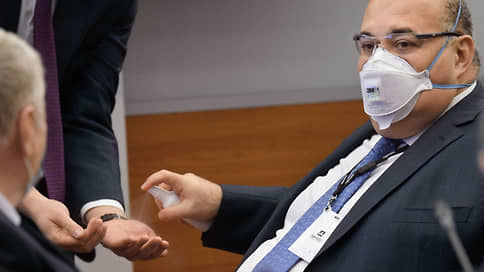Hungarian weapons were used instead of German in the II. in World War
Following the disintegration of the Austro-Hungarian Monarchy, the design of weapons in Hungary, due to the regulations of the Trianon Peace Treaty, was completely stopped. Business circles in 1920 founded the Danuvia Foreign and Interior Co.in Budapest, which was later transformed into a weapon factory. Infantry weapons were made in 1935 and ammunition in 1938.
However weaponry The company also purchased its permission. It coincided King Paul With his return home in 1929, who moved to Switzerland about 5 years earlier.
In 1902, King obtained a mechanical engineering qualification at the Budapest University of Economics, and in 1909 received a reserve gunner. He entered in 1914 and set it off as a captain from the First World War. In 1910, he announced his first patent on the subject of « an automatic handicap with an unspecified, unstoppable barrier ». Around 1924 he began working at the Swiss SIG Neuhausen factory, where he designed two weapons, including Ke-7-which were sold abroad.
Have also surpassed German planning
The King -designed submachine gun was 39M and second version 43M was a very special weapon. He used a 9×25 mm Mauser pistol, but it could be fired in the long run – some sources, 110 meters, shot the then regular helmets. Due to this feature and its long tube, it is often classified as a department of machine rifles. The weapon had three-position fire shift insurance equipment: closed, single and series shoots- wrote Hungarian National Museum.
The two specialties of the weapon were the Király mass lock (a split, delayed mass lock system) and a folding storage that fits into the lower part of the bed. Once the storage was recovered, the weapon was not usable because it could not be filled into a tube – this feature made it easier to wear the weapon.
« Its advantage is clearly due to the fact that the 9x25mm Mauser export pistol charity has had better combat-technical performance data than contemporary German, Soviet, American and similar. said Lieutenant Colonel Péter Soós, deputy director of the Military History Institute and Museum Director, about the king’s series.
The submachine gun was first intended for law enforcement, which is why it was extremely important to have a rifle -like, prestigious appearance – a long tube, a wooden shoulder rest. In January 1939, the Hungarian Royal Defense Forces selected King’s design, challenges were 4 German, 1 Finnish and 1 Swiss planning, but compared to the initial speed of the cartridge, more advanced to the locking structure, used stronger ammunition and easier. About 11,000 of the 39M were made.
« In addition to the King’s submachine gun, the German-Swiss Steyr-Solothurn S1-100, Finnish Lahti, Sig MKMS in Switzerland, German MP-35, German Schmeisser MP-28 II and German were also written by ERMA EMP. »… Based on the trial, it can be stated that the King’s submachine gun is a perfectly suitable structure and, with the already tried submachine guns, not only can it compete, but also outperform them in several respects.«
Hungarian military engineers looked at the gun as a hand -held shooting tool for replacing self -filler rifles than a submachine gun. That is, unspoken unspoken, the king’s submachine gun can be considered as the forerunner of the rifle rifles that fuel the intermediate cartridge « the lieutenant colonel added.
The paratroopers made a number 39/AM, which was provided with a foldable Fatus, but folded by folding because the ink had covered the trigger.
According to experience, the King designed the 43M type, which included several major modifications – in February 1943 it was systematized. The weapon’s pipe was shortened by 75mm, replacing the fatus with a two-armed, foldable steel shoulderrest, making the weapon lighter and smaller, much better fit for the needs of mechanized and parachute units. Another novelty is that this version has already received a pistol grip. A couple of tens of thousands of this version were made.
In 1944, another version made of completely metal, leaving the possibility of folding the magazine and combining the locking body and lock manager, but only test copies were made.
The weak points
As with everything, this weapon had a weak point, primarily ammunition. Although the 9×25 mm ammunition planned at the beginning of the century was still modern when planning, the rapid development of technology quickly became stronger competitors. In addition, it was common for the fracture of the vaginalamps, which caused less powder to put in, reducing its efficiency. The next big slap came on the eastern front, as no such ammunition was used for other weapons, so the supply was unreliable.
« The disadvantage of the weapon was also due to the use of ammunition, because due to extra performance, the editors did not think about traditional weight -closing, but a complex locking structure that is more compensated for the kick. We also had to face a lack of raw materials and relocation of factories » added Peter Soós.
After the war
The 43M of the after war It was used until the Soviet PPS was introduced, but the ÁVO, the Ministry of the Interior, the police and the Labor Guard used the KI type weapon from 1953. The king’s « weapon family » successor in Dominica was a big track. The Dominican weapon factory has issued a rifle family under the name Cristobal, as King has come to them for the rest of his life. After the war, he and other professionals were sued in infidelity, sentenced to imprisonment and confiscation of wealth.
For this reason, King fled to Switzerland and from there to Dominica, where he began working at the La Armeria weapon factory in San Cristobal in 1948. Here he designed a successful series, which was the crowned king of Dominican weapon production. The weapon factory was ruined, so the King tried to sell his invention in other countries, for which the local secret services were likely to have disappeared.




